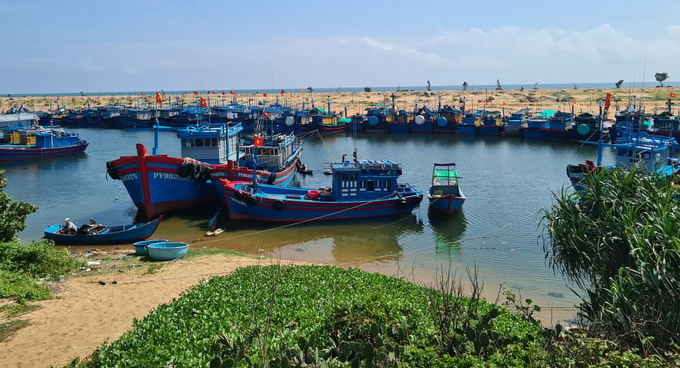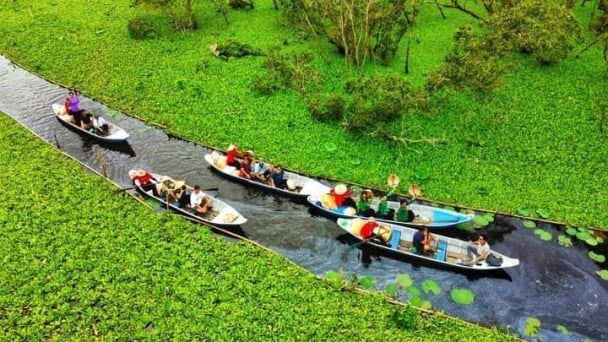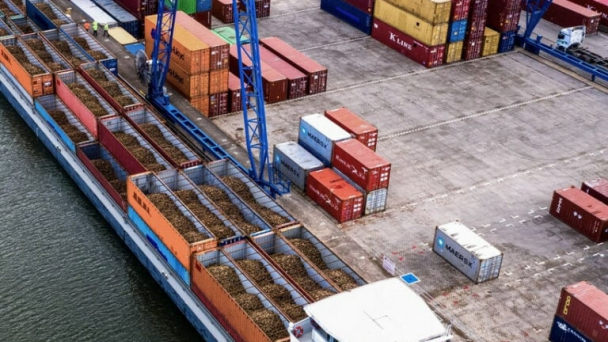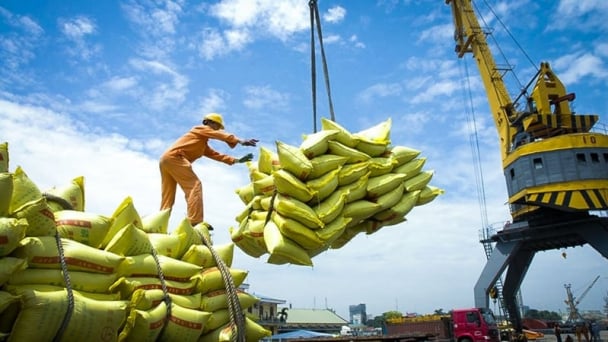May 31, 2025 | 08:43 GMT +7
May 31, 2025 | 08:43 GMT +7
Hotline: 0913.378.918
May 31, 2025 | 08:43 GMT +7
Hotline: 0913.378.918
Government Decision No. 582/QD-TTg dated July 3, 2024, which approved the Plan for the Fishing Port and Vessel Shelter System from 2021 to 2030, with a vision towards 2050, states: Fishing ports and vessel shelters are critical components of the fisheries and socio-economic infrastructures. They have been identified as one of three strategic breakthrough fields of investment needed to effectively support fisheries exploitation activities, promote socio-economic growth, and protect social welfare, thereby improving the living standards of the local communities.

The plan aims to complete and effectively operate the nationwide fishing port and vessel shelter system by 2030; with the goal of developing the system into an interconnected, regional, industrialized, and modernized network. Photo: Huy Hung.
The plan for the fishing port and vessel shelter system outlines the general objective until 2030 as: enhancing and modernizing supporting infrastructures for the fisheries sector; fulfilling the need for fisheries logistics services; ensuring food safety; reducing post-harvest losses; and protecting the safety of fishing vessels and fishermen; stimulating socio-economic development; improving fisheries management efficiency; enhancing international integration; reinforcing climate change resilience; promoting protection of the environment, marine ecosystems; and contributing to national defense and security.
On the other hand, the plan's specific objectives until 2030 involve: completing and effectively operating the nationwide fishing port and vessel shelter system; developing the system into an interconnected, regional, industrialized, and modernized network. The network helps to meet mooring needs, provide fisheries logistics services, and promote development towards integration to increase the value of fisheries exploitation. Key targets include:
- Ensuring that the fishing port system can handle up to 2.98 million tons of seafood annually, which comprises of the entire harvested seafood volume and a portion of mariculture harevest; enforcing fisheries management measures to meet the requirements of origin traceability for harvested seafood, and prevent illegal fisheries exploitation activities.
- Establishing shelters to accommodate over 83,600 fishing vessels.
- Allocating land and water surface area in compliance with Articles 78 and 84 under the 2017 Law on Fisheries for all fishing ports and vessel shelters.
Additionally, the plan aims to establish major domestic and international trade hubs to drive the development of seafood industrial zones, coastal economic zones, and major fishing centers in association with key fishing grounds. This strategy aims to foster sustainable and efficient development in the fisheries sector.
The plan for the fishing port and vessel shelter system from 2021 to 2030, with a vision towards 2050, also aims to improve infrastructure and enhance the capacity to provide services at fishing ports. This initiative aims to effectively fulfill the need for fisheries logistics services; ensure food safety and hygiene; ensure nutritional requirements and food supply for the community; integrate economic, tourism, culture, and social welfare development with environmental sanitation, the construction of new rural areas, and national defense, security in suitable locations. Key targets include:
- All Type I fishing ports in major fisheries centers will be constructed with comprehensive and modern infrastructure, including fully mechanized, synchronized cargo handling facilities.
- All Type I fishing ports will be equipped with comprehensive and modern infrastructure, with synchronized cargo handling facilities with a mechanization rate of at least 90%.
- All Type II fishing ports will be equipped with synchronized and essential mechanized cargo handling facilities, with a mechanization rate of at least 70%.

According to the plan, stakeholders will focus on enhancing and strengthening the management capacity of the fishing port and vessel shelter system from central to local levels. Photo: Hong Tham.
According to the plan, stakeholders will focus on enhancing and strengthening the management capacity of the fishing port and vessel shelter system from central to local levels. Additionally, the plan emphasizes the need to manage fisheries exploitation activities at fishing ports; monitor catch volumes unloaded through ports; promote origin tracing for seafood products; and prevent illegal fisheries exploitation activities. Additionally, digital management measures will be implemented across all Type I fishing ports.
Between 2021 and 2025, stakeholders will focus on infrastructure improvements in Type I fishing ports across five major fishing centers, as well as regional Type I fishing ports and vessel shelters that are carried over from previous plans. These areas have been identified as locations frequented by large numbers of fishing vessels. Moreover, stakeholders will also invest in improvements to fishing port and vessel shelters on island routes, as well as projects combining economic activities with national defense and security.
By 2050, the fishing port system will be developed in a comprehensive, synchronized, and modern direction, with an emphasis on meeting green port criteria. Consequently, Vietnam's fishing port system will be able to compete with major fishing ports in the region and the world. Type I fishing ports in major fisheries centers will serve as international gateways and valuable links in the global seafood value chain, boasting high competitiveness.
Additionally, the plan aims to modernize the fishing port and vessel shelter system on islands, particularly in the two island districts of Truong Sa and Hoang Sa. This initiative will contribute to environmental protection, marine ecosystem conservation, and ensuring national defense and security.
Translated by Nguyen Hai Long
/2025/05/29/5625-12-214801_567.jpg)
(VAN) Provincial mergers in the Mekong Delta promise to streamline administration, expand inter-provincial raw material areas, and foster close linkages in agricultural value chains, benefiting both businesses and cooperatives.

(VAN) Merging Mekong Delta provinces contributes to the expansion of agricultural raw material areas, addressing previous constraints caused by provincial boundaries. Additionally, this expansion will reduce costs and strengthen linkages between businesses, cooperatives, and farmers.
/2025/05/29/1043-2-153730_145.jpg)
(VAN) The Government's policy to merge provincial-level administrative units opens up major opportunities for the Mekong Delta region to reshape its agricultural development strategy toward large-scale production, effective regional linkages, and sustainability.

(VAN) The mutual export of agrifood products between the European Union (EU) and the United Kingdom (UK) must occur again without certification, border controls or other red tape. This was agreed at the UK-EU summit.
/2025/05/22/5121-2-173645_677.jpg)
(VAN) NBSAP Tracker identifies strengths and areas for improvement in the National Biodiversity Strategy, based on each region’s priorities and capacities.

(VAN) The draft amendment to the Circular on rice export trading stipulates a periodic reporting regime for rice exporting enterprises.

(VAN) Dong Thap farmers attained an average profit margin of 64% during the summer-autumn 2024 crop (first season), while An Giang and Kien Giang farmers followed with 56% and 54%, respectively.